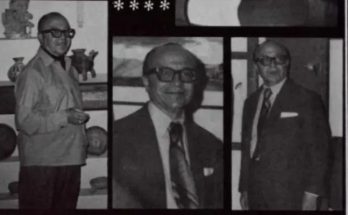By Luis Felipe Rodriguez Palacios
Jean Meyer wrote several volumes about the Cristero wars. This is a redacted excerpt. The 1917 Constitution granted the State the right to administer the clerical profession. The Catholic Church was in the same legal situation as it was before Independence, except that now the state was aggressively anti-ecclesiastical. There was a resurgence of a Jacobin, or secular, militarism—and resistance from the Catholic public, and the clergy. There was a basic incompatibility between the Church and the secular state. The latter wished to remove the church’s power from the public, while the church jealously guarded its prerogatives, patronage, and its control over the masses. These differences clashed and politics entered the discord.
The president of Mexico at that time was Obregon, and he was a moderate and conciliatory.
The dispute between the two groups became more and more heated during Obregon’s term and spilled over into the term of the new president, Calles. Unlike Obregon, who had attempted to maintain relations with the Vatican, Calles chose sides and made the confrontation inevitable.
In February, 1925, Secretary of State Morones had tried to establish a schismatic Mexican Church, separate from Rome, but that effort failed miserably. Catholics lost confidence in the government, and war began on that date. At the beginning of 1926, Calles accepted the penal code that added a common law concerning infractions in the matter of cults. On July 31, 1926, when the new law took effect, the bishops suspended public worship. Immediately, the Attorney General was seized by the government, and crowds poured into the churches to receive the sacraments. The president declared: “I think we are at the moment in which the fields are going to be demarcated forever; the hour is approaching in which the definitive battle is going to be waged, we are going to see if the revolution has defeated the reaction, or if the triumph of the revolution has been ephemeral.”
French diplomat Ernesto Legarde was with President Calles on August 26. «Every week that passes without religious exercises will cause the Catholic religion to lose two percent of its faithful.” Calles was determined to put an end to the church and to get rid of it from his country once and for all. “At times, President Calles, despite his realism and his coldness, gave me the impression of approaching the religious question with an apocalyptic and mystical spirit,” Legarde commented.
Catholic laity and the bishops tried to use legal resources, asking for reform of the Constitution. This was not feasible with President Calles. It seemed to the church that the Constitution could be easily modified, but it was greatly mistaken. There was one unknown that no one talked about, that no one seemed to think about, that they all underestimated— the attitude of the Christian people.
Over the course of the summer of 1926, the government and the priests did not stop negotiating, and diplomats went back and forth between Mexico, Rome, and Washington.
The negotiations continued for three years, and the war continued as well. The war was a surprise to the State, which considered religion to be a woman’s thing. President Calles said, «It’s the henhouse of the Republic.» He was referring to Jalisco, a state in which Catholics were the most troublesome. The war was also a surprise for the Church.
(To be continued)




